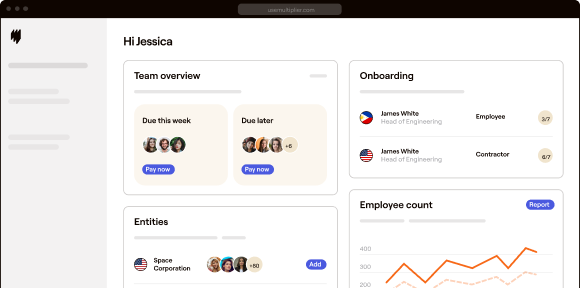It’s no secret that the pandemic has wrought unprecedented havoc upon the average worker. The number of U.S employees suffering burnout has risen to a shocking three in four, according to a Spring Health study in 2020. McKinsey’s report in 2021 revealed one in three employees reported mental distress related to their returns to office. Recent studies in India showed a worrying 100% jump in mental health-related cases.
This rising wave of affliction needs immediate and drastic correction. Employers risk subjecting their staff to increased distress if they don’t make the transition to physical workspaces smooth and empathetic.
Given their outstanding success, remote and distributed workforces are sure to play a massive part in the future of the industry. Companies worldwide are quickly adapting to this new way of work. However, they might want to bring back employees to the office for various reasons – ranging from productivity concerns to client requirements.
The first question business should get clarity on is whether returning to office increases the chances of employee burnout and discomfort. Pandemic fatigue is real, and easing the anxiety it provokes will be the biggest obstacle for companies during the reintegration phase.
It will take some effort to ward off the pandemic’s effects on the psyche of employees worldwide. Until then, companies must focus on building back better from the setbacks of the pandemic by focusing on the following aspects of their physical offices:
1. Building a More Empathetic Work Culture
Empathy and compassion have turned up as the most crucial attributes for businesses due to the uncertainties caused by COVID-19. According to Microsoft’s Global 2022 Work Trend Index, the top five work aspects rated by employees include positive culture (46%), mental health and well-being benefits (42%), a sense of purpose (40%), flexible work hours (38%) and more than two weeks of annual paid vacation (36%). This being the case, employers now have a higher responsibility to help improve employee wellness and contribute to positive outcomes.
As opposed to a blanket return, employers should develop flexible and hybrid work options, such as a four-day work week that would allow for a greater work-life balance and let employees choose what will suit them the best. This would allow for flexibility in case the pandemic or other circumstances change.
2. Promoting Diversity, Equity, and Inclusion
Leaders must pull down the barriers coming in the way of fair treatment of both onsite and remote employees. A McKinsey report says that the employees who are most stressed about their return to work include the primary caregivers of children or parents as they struggle to balance their family responsibilities and employer’s changing policies.
On the other hand, a blanket remote-only workplace may not be a win-win situation for everyone, especially for those employees who lack privacy at home or live in smaller spaces. Therefore, organizations should come up with ways to support the employees, such as alternative child care options, flexible work schedules, and the freedom to choose what works for them instead of a one-size-fits-all approach. Also, leaders may consider virtual meetings a primary mode of communication to lead the hybrid teams to ensure parity and that no one misses out on essential conversations.
3. Addressing the New Wave of Anxiety
The new normal today is all about uncertainties about the next pandemic wave and its level of severity leading to employees’ fear and anxiety. Nonetheless, companies should endeavor to reduce the chaos and strategically promote employee support and well-being at the workplace. Employers must ensure and communicate the proper implementation of all standard health measures and vaccine mandates to establish a safer working environment for the employees.
Moreover, since the return to work may increase burnout among employees, organizations may also focus on minimizing the stress levels by offering additional time off or mental health support.
4. Investing in Compassionate Leaders
There needs to be a new vocabulary for offices in the new normal, and this has to be driven by the leaders within it. Successful leaders must look beyond managing and getting the best out of employees in the building; they must account for members working remotely, across shifts, and in different locations.
Leaders will have to get into the mindset that outcomes are far more important than hours spent in the office. Managers will have to show that they embrace flexibility and have the nous to handle delicate situations arising from hybrid work.
With the advent of remote and hybrid work, new-age leaders must also equip themselves with the right tools and knowledge to handle new-age problems — how to enable better work-life balance of team members, how to model the right behaviors, how to focus on well-being, etc.
5. Enabling Workspaces of the Future
Your traditional conference rooms won’t serve the same purpose anymore. If companies are to prioritize mental health, then the amenities at the office have to reflect that. Workspaces of the future will not have room for a token lounge or wellness center but instead capitalize on every opportunity to improve employees’ lives at physical offices.
Redesigning conference rooms to accommodate and facilitate more engaging meetings, centers for virtual workshops, and break areas specifically designed to leave work behind are great assets to gift to your employees.
The pandemic has awoken today’s workforce to technological advances that help enhance productivity and collaboration. Asking employees to return to offices that are still technically impaired gives them another reason to go back home.
6. Providing On-Demand Employee Support
There’s no going around this. Workers are only slowly recovering from the seismic shifts the pandemic thrust upon them. Another shift in the way of working should be complemented with support and empathy.
Employees should have various avenues to share their experiences and problems. Weekly connects with other team members strengthen bonds and establish a sense of community. For example, 95% percent of people who participated in Zendesk’s “empathy circles” felt it increased their sense of workplace safety.
Leaders and members at the top of the management ladder should be accessible to employees across the organization to provide guidance and address issues related to misinformation and company policies.
The worst of the pandemic looks to be over, but the scars are still fresh. Companies must take a proactive approach when inviting employees back to their physical workspaces. To truly put the ordeal of the pandemic behind us, the challenges around mental health issues need to be addressed without taking shortcuts.
Optimal performance depends significantly on how your employees feel about work and themselves. By employing the above interventions, you’ll put your employees at the forefront and allow them to give back to the company in the manner they are most comfortable with.







